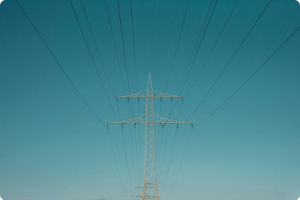The OBBB Effect: What It Means for Clean Energy Projects

A New Federal Landscape
In May 2025, the U.S. House of Representatives narrowly passed the “One Big Beautiful Bill” (OBBB), a sweeping tax and spending package that brings major changes to federal programs. Although the legislation spans multiple sectors, clean energy is among the most affected. For investors and developers, it reshapes project economics, accelerates development timelines, and redirects financing strategies in ways likely to shape the industry’s trajectory for years to come.
Key Provisions of the OBBB
Several measures within the bill are particularly relevant to clean energy:

Federal Fees & Royalties
Projects on public lands are subject to new annual land-use fees and a 3.9% gross revenue royalty, raising costs and channeling 50% of revenues to state and local governments.

Rollback of IRA funding
Tens of billions in grants and loan programs under the Inflation Reduction Act have been rescinded, including the Greenhouse Gas Reduction Fund and EV incentive programs.

Stricter supply chain rules
Expanded Foreign Entity of Concern (FEOC) restrictions now cover solar, wind, and storage equipment in addition to EVs, driving higher compliance and procurement costs.

Shortened tax credit window
Tech-neutral clean electricity credits (45Y PTC / 48E ITC) will now phase out sooner, requiring projects to start construction by mid-2026 and be operational by year-end 2027.
Project & Financing Implications
The combined effects of the OBBB provisions squeeze project margins and accelerate timelines:
- Project economics: More stringent fees, royalty obligations, and reduced federal support, especially on public lands, are shifting development toward private sites.
- Financing models: With diminished grant/loan support, sponsors will lean more heavily on private capital, balance-sheet investing, or newer vehicles like Master Limited Partnerships (MLPs) for storage and microgrid deployments.
- Execution risk: The compressed timeline for tax credit eligibility forces developers to speed up construction, heightening the chances of labor shortages, bottlenecks in the supply chain, and grid interconnection delays.
- Supply chain scrutiny: Expanded FEOC (Foreign Entity of Concern) rules now encompass wind, solar, and storage components, raising compliance burdens and pushing firms to retool procurement strategies to avoid disqualification.
- Valuation pressure: With incentives phasing out faster, sponsors and investors must reprice risk, adjust discount rates, and stress test their pipelines under more aggressive downside scenarios.
Sector-Specific Impacts & Risks
Utility-Scale Solar & Wind: Projects on federal lands face higher costs from new land-use fees and a 3.9% royalty on gross revenues. At the same time, shorter tax credit deadlines force developers to accelerate construction, creating risks of labor and interconnection bottlenecks. These pressures may shift new capacity toward private land development.
Energy Storage & Microgrids:
While the bill opens the door for storage and microgrids to qualify for Master Limited Partnership (MLP) treatment, reducing financing costs, the sector remains exposed to higher equipment prices and tighter sourcing rules under expanded FEOC restrictions.
Mobility & Efficiency (EVs and charging):
The repeal of Inflation Reduction Act funding and the expiration of EV and charging credits after 2026 remove critical demand-side incentives. This will likely slow adoption, weaken fleet electrification programs, and increase reliance on state or private funding.
Carbon Capture & Clean Fuels:
Cuts to 45Q tax credits and renewable fuels incentives undermine project economics, particularly for early-stage carbon capture, biogas, and renewable fuel facilities. Without these subsidies, only the lowest-cost or most strategically backed projects are likely to advance.
What’s next?
The OBBB marks a turning point for U.S. clean energy policy. By narrowing the window for federal incentives, raising compliance costs, and reshaping financing structures, the bill compresses near-term opportunity while amplifying long-term uncertainty. Developers and investors who act quickly, adapt sourcing strategies, and explore new financing models may still capture value in the short run. But over time, success will depend on resilience, building projects that can withstand tighter economics, reduced federal support, and greater reliance on private capital.
The clean energy transition remains firmly underway, but the path ahead is steeper. Those who adapt quickly will shape the next wave of growth.






